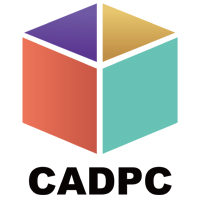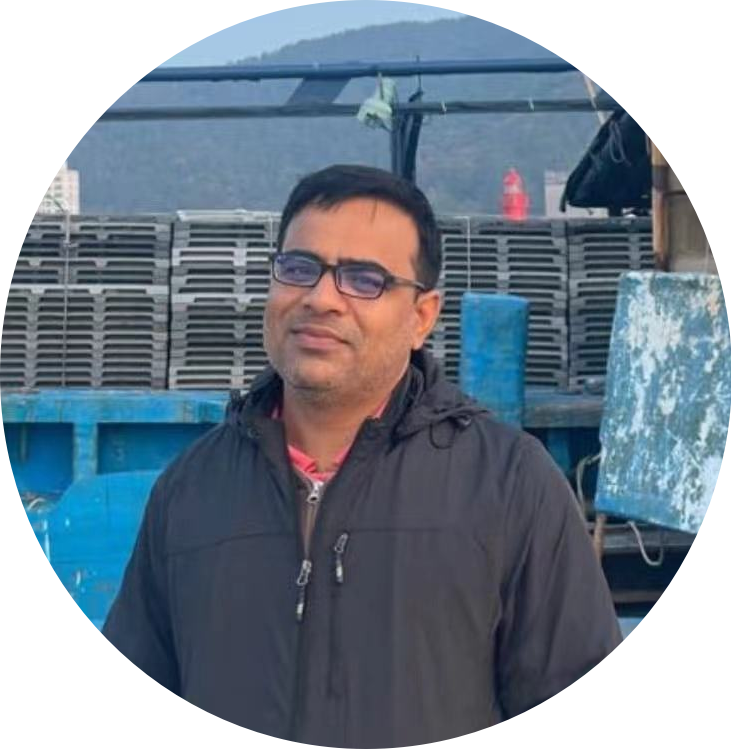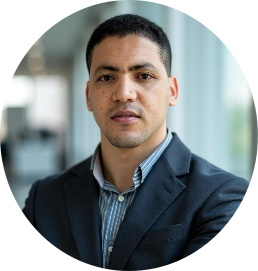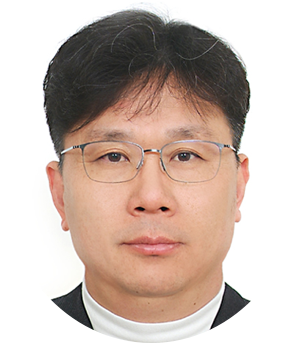
Keynote Speakers

Assoc. Prof. Khairunisa Muthusamy
Universiti Malaysia Pahang, Malaysia
Biography:
Khairunisa Muthusamy is an Associate Professor who has been involved in teaching and research activities for more than 20 years in the Faculty of Civil Engineering Technology, Universiti Malaysia Pahang. She received her PhD in Civil Engineering from Universiti Teknologi Malaysia in 2009. Since then, she has been actively involved in environmental friendly concrete research. She has published more than 100 journal papers and conference proceedings related to concrete research. Her keen interest in exploring the potential of local waste materials especially from palm oil industry for concrete use has resulted in development of green lightweight concretes. Her research product has won gold awards in international exhibition. She is also the member of Board of Engineers Malaysia and Concrete Society of Malaysia.

Dr. Hamid Soleymani
City of Edmonton, Alberta, Canada
Biography:
Dr. Hamid R. Soleymani received his B.Sc. and M.Sc. degrees from Iran University of Science and Technology (IUST) in 1987. He spent over four years teaching and conducting research at IUST before continuing his education in Canada, where he earned a Ph.D. from the University of Saskatchewan in 1997. Following his Ph.D., Dr. Soleymani worked as a research associate at the North Central Superpave Center at Purdue University, USA, for three years. During this time, he served as the principal research engineer for the National Cooperative Highway Research Program (NCHRP) 9-12 project, titled: "Incorporation of Reclaimed Asphalt Pavement with Superpave.” From 2000 to 2006, and again from 2010 to 2012, Dr. Soleymani was a faculty member in the Department of Civil and Environmental Engineering at the University of Alberta, Canada. He taught both undergraduate and graduate courses, including civil engineering materials, transportation engineering, and pavement management systems. He was also involved in several research projects for Alberta Transportation and the City of Edmonton, focusing on pavement engineering.
In addition to his academic work, Dr. Soleymani has over four years of experience as a senior pavements and materials engineer in consulting firms in Edmonton, Canada. For the past decade, he has worked with both the Saskatchewan Ministry of Highways and the City of Edmonton. Throughout his career, he has delivered numerous professional courses for road engineers and technologists across Canada.
With more than 25 years of combined academic and industry experience, Dr. Soleymani brings a unique North American perspective in the field of pavement and infrastructure engineering. He is a registered professional engineer in Alberta (APEGA) and holds various professional certifications, including IPWEA Professional Certificate in Asset Management Planning.
Dr. Soleymani has authored over 50 papers in technical journals and conference proceedings. His research interests include infrastructure maintenance and management, asphalt and concrete materials characterization, Superpave technology, pavement design, rehabilitation and maintenance, materials modeling, pavement performance evaluation, and pavement management systems.

Dr. Jitendra Kumar Singh
Research and Development, Jindal Steel and Power, Angul, Odisha, India
Biography:
Dr. Jitendra Kumar Singh was born in Varanasi, India, and earned his Ph.D. from the Department of Chemistry at the Indian Institute of Engineering Science and Technology (IIEST), Shibpur-Howrah, West Bengal, in 2017. He began his career as a Project Associate in the Corrosion and Surface Engineering division at CSIR-National Metallurgical Laboratory (CSIR-NML), Jamshedpur, where he worked from April 2009 to October 2014. Following this, he joined the Department of Architectural Engineering at ERICA campus, Hanyang University, South Korea, as a researcher from August 2015 to February 2019. He continued at the same institute as a Research Professor until March 2022.
In April 2022, Dr. Singh took on the role of Assistant Professor, and in March 2024, he was promoted to Associate Professor at Hanyang University, South Korea. In July 2024, he returned to India, joined Jindal Steel and Power in Odisha as an Assistant General Manager (AGM) in the R&D department.
With over 100 publications, including research articles in SCI/SCIE journals, patents, copyrights, and book chapters, Dr. Singh's research interests span a wide array of topics. These include nanocomposite coatings, dual metal/polymer coatings, thermal spray technology, hot-dip galvanizing, corrosion, inhibitors, electrochemistry, the synthesis of novel materials for corrosion protection of metals and alloys, conservation of metallic artifacts, concrete durability, sensors and semiconductors, advanced materials, techniques to reduce coating porosity, and energy storage materials.

Dr. Stavros Sakellariou
Brunel University London, London, United Kingdom
Biography:
Dr. Stavros Sakellariou is a Marie Sklodowska-Curie Research Fellow at Brunel University of London, Department of Civil and Environmental Engineering. His research project FIREWISE, funded by the UKRI/HORIZON scheme, which aims to establish an integrated framework for proactive wildfire resilience assessment and management. With 6.5 years of postdoctoral research experience as a Senior Researcher and 4 years of pre-doctoral research, Dr. Sakellariou has worked on 8 multi-partner projects addressing natural disasters, spatial planning, forest fire management, and environmental resilience. His research has contributed to innovative methodologies for assessing wildfire risks and optimizing resource allocation, informing policy and operational practices. Dr. Sakellariou has published over30 articles in international scientific journals, 45 conference papers, and 3 book chapters. He has served as an invited speaker at national and international universities and conferences, where he has presented on integrating geoinformatics into wildfire management. His editorial experience includes acting as Lead Guest Editor for two special issues on natural disasters and wildfires, and he has reviewed for over 25 scientific journals. He has earned 7 national and international awards. Alongside his research, Dr. Sakellariou has taught for 6 years in MSc programs (e.g., Natural Disasters Analysis and Management, Climate Change Management and Spatial Resilience) and 5.5 years in undergraduate programs (e.g., Forest Fires, Natural Hazards, Climate Change), reflecting his dedication to education and knowledge dissemination. He holds a degree in Spatial Planning and Regional Development (MEng), an MSc in Spatial Planning & Development, an MSc in Geospatial Technologies (Erasmus Mundus – Joint Degree), and a PhD specializing in Spatial Decision Support Systems (SDSS) for the Prevention and Management of Wildfires.

Assoc. Prof. Hassane Lgaz
Hanyang University, Ansan, South Korea
Biography:
Dr. Hassane Lgaz is an Associate Professor at Hanyang University. He earned his Ph.D. from Ibn Tofail University (Kenitra, Morocco) in 2017 and began his postdoctoral career at Konkuk University (Seoul, South Korea) in 2018 as an Assistant Research Professor. In 2020, he joined Hanyang University ERICA as a researcher, was appointed Assistant Professor in April 2022, and later promoted to Associate Professor at the Center for Creative Convergence Education.
Dr. Lgaz’s research spans corrosion inhibition, concrete durability, wastewater treatment, density functional theory (DFT) modeling, and molecular dynamics simulations. He has published over 200 articles in SCI-indexed journals, with more than 9,000 citations in Web of Science and 11,000 in Scopus, achieving h-indices of 54 and 59, respectively. Recognized among the top ten global authors in corrosion inhibition, Dr. Lgaz has also contributed seven book chapters with esteemed publishers such as Elsevier, Wiley, the Royal Society of Chemistry, and the American Chemical Society. His research collaborations include partners from Morocco, China, India, Saudi Arabia, Brazil, and South Africa.

Prof. Yong Han Ahn
Hanyang University, Ansan, South Korea
Biography:
Dr. Yong Han Ahn is a Professor in the School of Architecture & Architectural Engineering at Hanyang University ERICA specializing in sustainable design and construction & smart construction. Throughout his career, Yong Han has involved in sustainable design and construction projects to implement sustainability in the built environment. Dr. Ahn has been conducted research in the field of smart construction and technologies in the built environment. As a LEED Accredited Professional and Envision Sustainability Professional (ENV PV), Yong Han also brings the latest sustainable design and construction practices that help to develop sustainability in the built environment. His specific areas of interest include sustainable building design strategies and technologies for reducing energy consumption, sustainable home development, life cycle cost analysis, sustainable facility management, construction education, STEM education, high performance tall building and international construction and risk management.